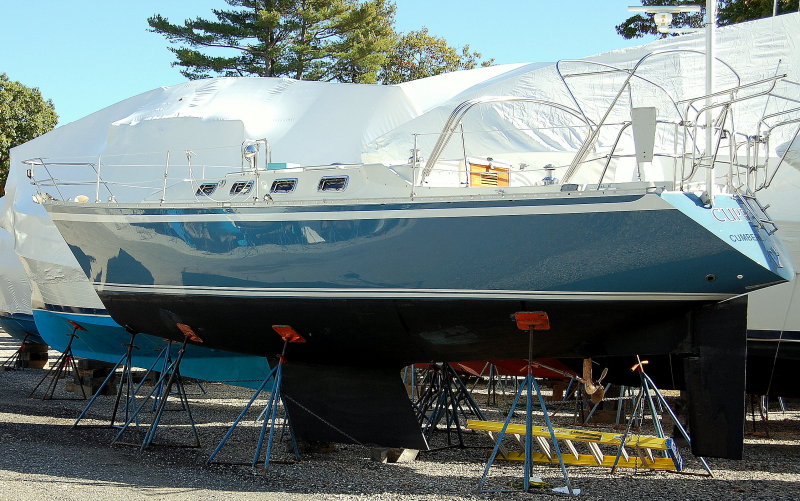but they also say that you can't use any products other than their Awlcare wax stuff. I bought it, used it, and it sucks.
Listen, I know nobody knows a product better than the folks who made it, but IMHO some of these same folks resort to marketing tactics that are just plain wrong.
I'm not smart enough to explain why my experience flies in the face of the Awlgrip party line, but it does, and I'm simply sharing it here.
Yeah, I recognize that rash in your photo. I used to have some like it (okay, maybe not quite that bad.) It buffed out no problem. I do agree that you have to be careful not to burn the paint but I'd imagine that applies to most products.
Anyway, even if we don't always agree I still appreciate your posts here. I've learned a lot from you.
Fair winds.
Rick,
If you buff it it will shine because you are likely now buffing the pigment under the hard shell if you've burned through the resin layer. When you then put wax on it it will continue to shine, this is why you can become a "slave" to it because you've now lost the protective resin layer. If you let all the wax get stripped off and you burned through the outer shell you'll then see the discolored areas again. It is quite possible you did not burn through the resin layer yet. It may even be possible you have Awlcraft? Many yards now spray Awlcraft 2000 but still refer to it as Awlgrip, though this is probably unlikely @ 10 years old..
I am not making up the way Awlgrip buffs or does not. I have spent considerable time talking with Dave the owner of New England Fiberglass about this, as his booth is next to the booth I work, at the Maine Boat Builders Show, he was Ted Hood's paint guru for years before he left to start New England Fiberglass.
I have also attempted to buff it. I owned an Alwgriped boat that got winter cover chafe and spent nearly a half hour on the phone with Awlgrip tech support. I also see the local rep at the yard and chat with him too.
My paint was far out of warranty and they could have cared less if I was going to use Awlcare because I had already told them I had a couple of bottles. I was still told exactly what I wrote above and that was, not to buff it. I was also told to use Awlcare and not Collinite despite the fact that they already knew I owned it and would not be spending even more money on Awlcare. The advice they gave was genuine from a customer service prospective. I even asked it they could recommend a "pro" who understood the "melt" point stuff better than I? The answer was still "you should not buff it".
I still buffed it.

Though very, very gently. It did seem to minimize the chafe and then when I waxed it, it seemed to look even better, I did use Awlcare. By the next spring every chafe mark was back because I went to light and never really buffed anything due to how hard Awlgrip is.
Tech support was right and they did not have to be as they had already made their money off me. The only time they even hint at buffing it is when it is on it's last legs and then buff it til you finally wear through the pigment..
The magic of Awlgrip is its resin layer, which is thin and hard, but can be burned through. Perhaps you have not burned through it yet or the wax is just not letting you see that.
At 10 years you don't have much to lose, but buffing it earlier in its life can be an expensive mistake..
I actually find Awlcare to be decent stuff (actually costs about the same as Collinite

), though not nearly as long lasting as Collinite, but I won't use Collinite on my Awlcraft.
This was our boat on the day she came out of the water, untouched, and after nearly six months with only Awlcare..









